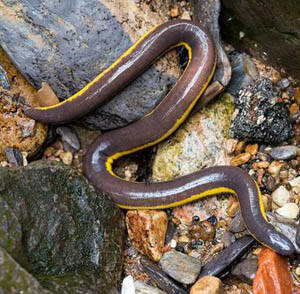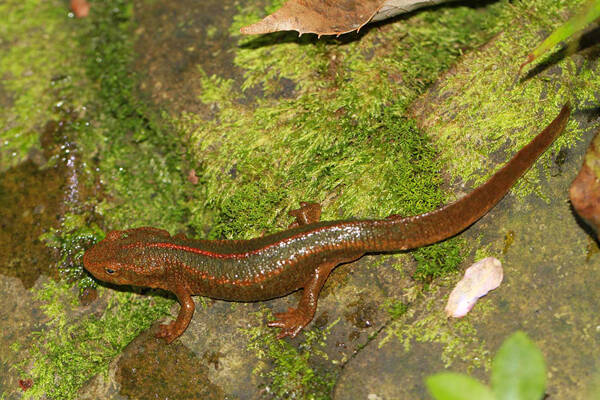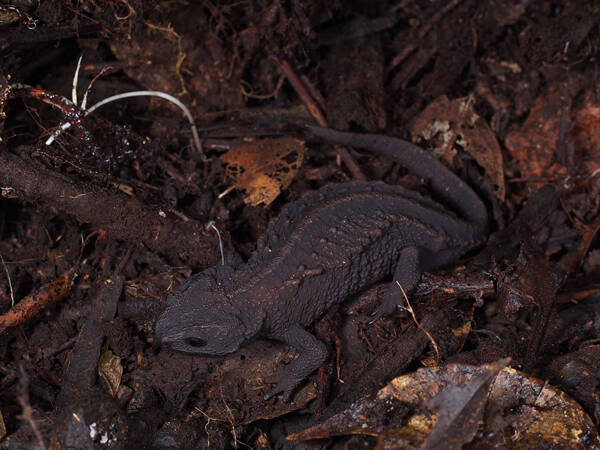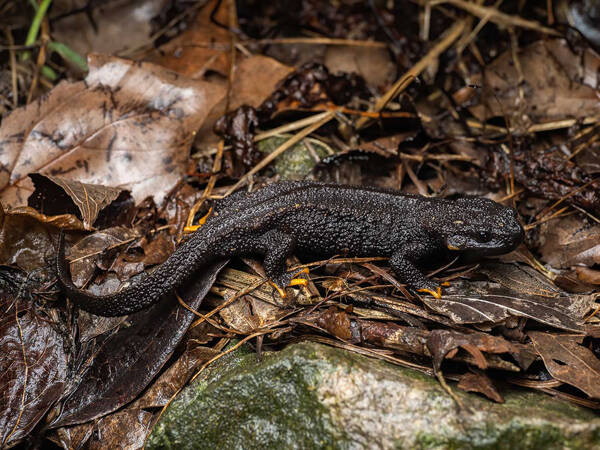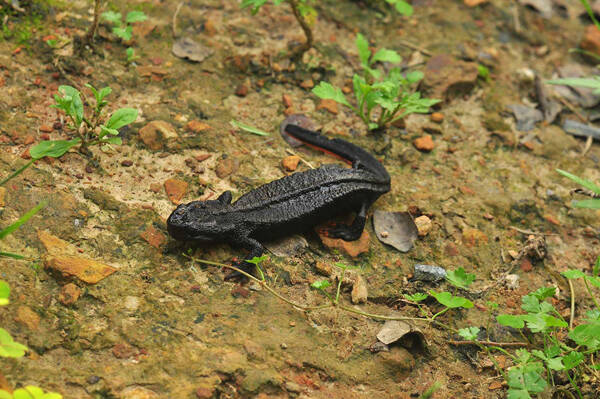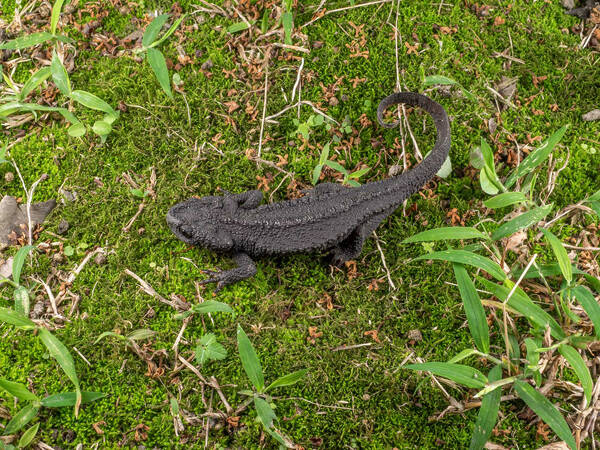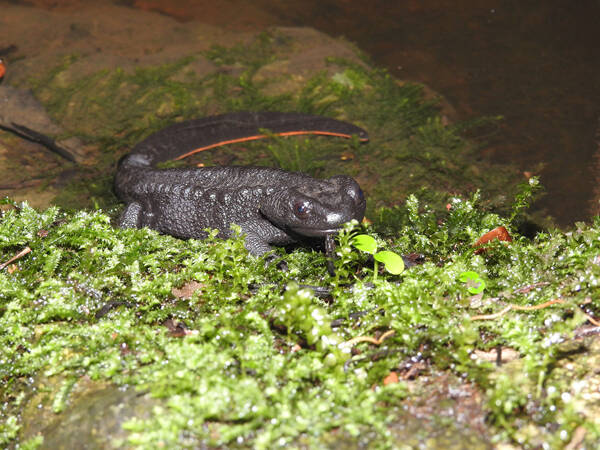Ichthyophis bannanicus
IUCN
LCBasic Information
Scientific classification
- name:Ichthyophis bannanicus
- Scientific Name:Ichthyophis bannanicus,Banna fish newt, taro snake, two-headed snake
- Outline:Urodela
- Family:Ichthyostega
Vital signs
- length:30-41cm
- Weight:No verification information
- lifetime:No verification information
Feature
The Xishuangbanna fish salamander is an ancient creature that has lived on Earth for at least hundreds of millions of years.
Distribution and Habitat
The Xishuangbanna newt is distributed in China and Vietnam (northern); in China, it is distributed in Yunnan (Mengla, Jinghong, Yingjiang), Guangdong (Luofu Mountain, Dinghu Mountain, Zhaoqing, Luoding, Xinyi, Huazhou), and Guangxi (Wuzhou, Dongxing, Beiliu, Yulin, Rongxian, Cenxi, Guiping, Nanning, Fangchenggang).
Appearance
The body is similar to an earthworm, nearly cylindrical, without limbs; the tail is short and slightly conical. The head is small and flat, longer than the width, and without limbs. The back of the body is dark brown, gray-brown or brown-black, with a purple waxy sheen; the eyes are blue-black, and the haptics are creamy yellow; there is a yellow or orange longitudinal band from the corner of the mouth to both sides of the body to the anus; the ventral surface is light brown or dark brown, and the area around the anus is light yellow.
Details
The Latin name of the Bannan ichthyophis is Ichthyophis bannanicus. It is a legless amphibian of the family Ichthyophidae and the genus Ichthyophis, with no subspecies.

It was unclear whether there were ichthyophis in China for quite some time. In 1922, Mell, R. first reported that Ichthyophis glutinosus was distributed in Luofu Mountain, Guangdong, China. However, due to the lack of detailed records and the lack of specimens for verification, there has always been doubt about the record. It was not until 1976 that Yang Datong et al. reported that a female adult of Ichthyophis glutinosus was collected in Mengla County, Xishuangbanna, Yunnan, which confirmed that Ichthyophis glutinosus was indeed distributed in China. In 1983, Wen Yetang further reported that many adults and juveniles of Ichthyophis glutinosus were collected in Shiwanda Mountain, Guangxi and other places. In 1984, Yang Datong determined that the specimen of another fish newt collected in Xishuangbanna was the same species as the "Two-ribboned fish newt" he reported in 1976, and pointed out that the two specimens were not two-ribboned fish newts, and named it a new species of Banna fish newt (Ichthyophis bannanica Yang 1984).
The main difference between the appearance of Banna fish newt and two-ribboned fish newt is that the first neck groove of the collar fold of Banna fish newt is far from the corner of the mouth, which is 2/5 of the distance from the tip of the snout to the corner of the mouth (4 mm); the second neck groove cannot be seen from the back of the head; the head width between the two eyes is greater than the distance between the snout and eyes. The first neck groove of the two-ribboned fish newt is tangent to the corner of the mouth; the second neck groove can be seen from the back of the head; the head width at the eyes is equal to the distance between the snout and eyes.
The Banna fish salamander lives in tropical and subtropical areas with dense vegetation and humidity at an altitude of 100 to 900 meters. It often lives in streams, small rivers and nearby puddles, ponds, swamps, cracks in rocks by the field, soil caves or under tree roots. According to Wen Yetang (1983, 1998), the fish salamander lives in caves, digging holes in fertile mud with its head, forming a network of tunnels that communicate with each other, with several hole openings; the hole openings and tunnels are located above the horizontal plane, and some are 0.5 meters from the water surface; during the day, it often lies in the cave or shows its head outside the cave, sometimes moves in the vegetable garden or the edge of the field, and goes out to forage at night. In winter, when the temperature drops below 15℃, it will enter hibernation, and come out to move when the temperature rises and remains above 20℃ in the spring of the following year.
The Banna fish newt relies on its keen sense of smell to find food and capture prey through smell. Since the mouth of the Banna fish newt is not big, it is completely helpless against those large insects. Therefore, its diet consists of those smaller animals, earthworms, worms, eggs in the soil, etc., which are their favorite foods. Since the teeth of the Banna fish newt are very small, they do not have any biting ability, but only increase friction to fix food. When preying on earthworms, the Banna fish newt always swings and twists its body continuously, slowly sending the earthworms into its stomach bit by bit, and then slowly enjoying them in the stomach and intestines.
The phenomenon of Banna fish newt shedding was observed under indoor breeding conditions. When molting, it first rubs its head on the soil or dead branches in the soil, and the cuticle cracks from the snout to form an opening. Then, by constantly opening and closing its mouth, it sheds the cuticle on the head to the neck; after a short rest, it finds a narrow path or dead branches in the soil and drills through them, contracting its body rhythmically while moving forward. During this period, it often stops to rest for about 30 seconds and take a deep breath after contracting several times. The cuticle begins to fall off from its neck and slowly moves back along the body, and finally gathers together to form a finger-shaped object that falls off from the tail. The cuticle shed by healthy individuals is a very thin layer of light yellow, slightly transparent, and generally relatively complete except for a crack in the snout. The molting of malnourished or sick individuals is incomplete and broken. When the cuticle is completely shed, the Banna fish newt is exhausted and will quickly turn its head to find the shed cuticle and swallow it. No predatory behavior was observed during molting.
Under captive conditions, the growth of the fish salamander is very slow, with an average annual growth of 30 mm. Female salamanders reach sexual maturity at a total length of about 350 mm; they build nests on the shore near the water level of the stream from April to May. The diameter of the cave is about 10 cm, and the eggs are laid inside. There are about 30 eggs, and the egg diameter is 8 mm. The capsule is wrapped with a capsule at one end, and the eggs are wrapped into a ball by the capsule's silk. The female salamander curls around the egg group to protect it. After hatching, the larvae enter the water and hide under the pebbles at the bottom of the water. Sometimes they also swim to the surface to breathe air. They are more agile than adults. At first, they feed on algae and other plankton, and gradually prey on aquatic invertebrates. Metamorphosis begins when the total length is about 180 mm. Adults only prey on earthworms and refuse to eat any other animal bait under captive conditions.
The public is not familiar with the Xishuangbanna newt. According to legend, it is a poisonous animal that cannot be touched. Therefore, no one captures it for medicinal purposes or to make huge profits like other rare animals, thus eliminating the factor of being killed directly by people. The main reasons for the decrease in the number of newcomers are: the rapid population growth, the serious shortage of arable land, the farmers' efforts to open up wasteland in the mountains, and the destruction of forests in large quantities; the forest farms in various places replaced the original water source forests with coniferous fir and pine forests and crops, cutting off the source of soil humus, making the soil beside the stream barren and difficult for earthworms to reproduce, indirectly affecting the survival of the Xishuangbanna newcomers; the land reclamation caused soil erosion, and when heavy rains came, mountain torrents broke out, washing away the fertile soil beside the stream and replacing it with sand and rocks from the mountains, which directly destroyed the habitat of the newcomers; the large-scale use of chemical fertilizers and pesticides, due to the rainy days, the fertilizers and pesticides flowed into the stream, the larvae in the water died immediately, the pesticides flooded the tunnels beside the stream with the rising stream water, and the adults were also poisoned.
Listed in the "Red List of Endangered Species of the World Conservation Union" (IUCN) 2004 ver 3.1 - Least Concern (LC).
Listed in the "National List of Terrestrial Wildlife with Important Economic and Scientific Research Value" issued by the State Forestry Administration of China on August 1, 2000.
Listed in the "Red Book of Endangered Animals in China" - Endangered level.
Listed in the "List of Wildlife under Key Protection in Guangxi Zhuang Autonomous Region of China".
Listed in the second level of the "List of Wild Animals Under National Key Protection in China".
Protect wild animals and eliminate game.
Maintaining ecological balance is everyone's responsibility!


